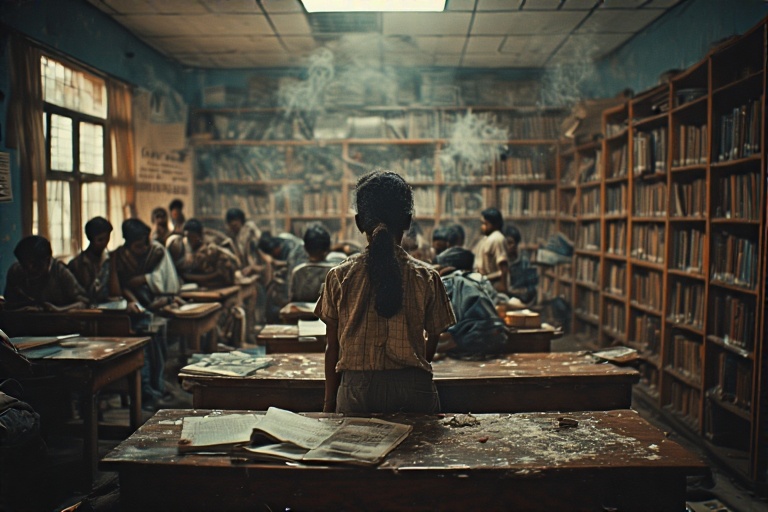Reforming Student Welfare in Indian Educational Institutions | A Call for Accountability, Transparency, and Direct Representation
Table of Contents
TLDR - Summary:
- Systemic Failures: Recent incidents at KIIT University and Carmel School, Dhanbad reveal deep flaws in student welfare oversight in Indian educational institutions.
- Inadequate Oversight: Bodies like NAAC, NIRF, AICTE, CBSE, and ICSE focus on ratings and guidelines, failing to enforce direct accountability.
- Need for Reform: Proposes the creation of direct complaint portals and independent local regulatory cells to ensure swift, impartial redressal.
- Empowered Student Representation: Emphasizes establishing truly independent student bodies to advocate for student rights and coordinate effective responses.
- Accountability Measures: Suggests strict sanctions—including temporary de-affiliation and admission suspensions—for institutions that neglect continuous monitoring and student safety.

Introduction
In just this year (before two whole months could elapse), extremely disturbing incidents—from the tragic suicide at KIIT University to the indignities faced by students at Carmel School, Dhanbad—have exposed deep flaws in the way student welfare is managed across our educational institutions. These events are not isolated incidents but symptomatic of a systemic failure: existing bodies like NAAC, NIRF, AICTE, CBSE, and ICSE merely offer ratings and guidelines without the robust, independent oversight necessary to protect students.
1. The Current Landscape of Educational Oversight
Regulatory bodies in India are tasked with maintaining standards through periodic assessments and ratings. However, their current mandate is limited to issuing guidelines rather than actively policing institutions. This gap creates an environment where universities and schools can, at times, act arbitrarily. For instance, in the case of KIIT University, the administration’s initial response to a student’s suicide—marked by cover-ups and harsh reprisals against protesting students—demonstrates how an institution can evade accountability when oversight is weak. Such incidents underline that ratings alone are insufficient if there are no effective mechanisms to enforce student rights and safety.
Current regulatory frameworks, focused more on compliance checklists than on real-time intervention, allow institutional misconduct to continue unchecked.
2. The Need for Direct Complaint Portals and Local Regulatory Cells
A key reform is the creation of dedicated online portals where students, parents, and other stakeholders can file direct complaints against any form of abuse or neglect. Such platforms would enable:
- Immediate redressal: Providing a transparent channel for grievances that bypasses internal college hierarchies.
- Independent oversight: Empowering local bodies at the college, city, and state levels to investigate complaints without conflict of interest.
Countries with decentralized educational oversight have shown that direct complaint mechanisms increase accountability and responsiveness. In the Indian context, a similar approach could ensure that when tragedies occur—like the abuse that led to the suicide at KIIT—students have an immediate recourse rather than relying solely on an institution’s goodwill.
Decentralized complaint portals and local regulatory cells could transform reactive measures into proactive accountability, ensuring that every student’s voice is heard at multiple levels.
3. Organized Student Bodies: The Missing Link
One recurring problem is the absence of a truly organized and independent student body. While many institutions claim to have student welfare cells or councils, these are often run by college authorities, leading to an inherent conflict of interest. In moments of crisis, spontaneous protests—such as candle marches against institutional negligence—emerge only because there was no pre-existing, organized platform for student representation.
Organized student bodies can:
- Advocate for student rights continuously: Rather than reacting only in moments of crisis, they would serve as ongoing watchdogs.
- Coordinate responses and collective action: Allowing for swift, unified protests that are more likely to force institutional change.
Without an empowered, independent student organization, students are left vulnerable and isolated, unable to effectively challenge decisions that directly impact their lives.
An independent, well-organized student body is crucial to safeguard the rights of students and to act swiftly when injustices occur.
4. Proposed Reforms: A Dual-Track Student Welfare Model
To bridge these gaps, the following reforms are proposed:
– Establish Independent Regulatory Portals: Create mandatory, government-backed online portals for lodging complaints. These should be managed by local bodies with jurisdiction at the college, city, and state levels to ensure timely and impartial redressal.
– Mandatory Independent Student Bodies: Every educational institution should be required to have a student body that is not influenced by college administration. This body would: - Represent student interests independently. - Coordinate with local regulatory cells in times of crisis. - Serve as a bridge between students and higher regulatory authorities.
– Enforce Accountability through Temporary Sanctions: Institutions that fail to continuously report and address student welfare issues should face strict penalties, such as:
- Temporary cancellation of their affiliations.
- Suspension of admissions for a predetermined period (e.g., two years).
Such measures would not only deter negligent practices but also ensure that institutions remain vigilant about their duty of care.
By enforcing tangible sanctions—such as temporary de-affiliation and admission suspensions—we can create a culture of accountability that transcends mere ratings and checklists.
Conclusion
The tragedies witnessed at KIIT University and Carmel School are stark reminders of an urgent need for reform in student welfare mechanisms. It is time for regulatory bodies to move beyond providing ratings and guidelines to taking an active role in student protection. By establishing direct complaint portals, independent local regulatory cells, and empowering genuine student representation, we can create a robust system that not only holds institutions accountable but also ensures that every student is afforded the dignity, safety, and justice they deserve.
Only with such systemic changes can we hope to build an educational environment that is truly safe, responsive, and fair for all students.
Resources
As this is an event currently in development, you can check out all the proofs of happenings below (updated in real-time):